Week 1: PROCESS LED INQUIRY
Process Into Image Paint Brief
The focus of the ‘Process Into Image’ Paint brief is to develop and invent a vocabulary of marks to guide the process of paint exploration. After viewing a text list created by famous sculptor Richard Serra for his artwork titled ‘Verblist’ 1967-8, I am to interpret and emphasise action words via paint through the process of one action leading on to another.
The use of verbs is definitely not new to me, as I have always utilised verbs as a dancer, dance choreographer and dance Advisor, plus as a school teacher in dance, physical education, language, spelling, writing and grammar skills. As a dancer, verbs are what the viewer sees, and the performer does. Therefore, I understand how text such as verbs relates to the Performing Arts and the Visual Arts. In the discovery process, the interesting point for me will be whether my actions portray my verb thinking? Will my action words look like verbs, even if I think, act and feel them? Perhaps, the actual outcome of dried paint may not look very verb like, which makes me think my encounter of the process is more important than the product, especially for me at this stage, being unskillful, and a newbie to visual art.
Engaging with some old paint on the surface of some old paper was a happy encounter. Outside, positioned on the ground on a large tarpaulin, I immersed myself in action words, imagining and picturing verbs falling from the paint. My body and mind were constantly moving and painting in sync. I prefer working on a larger scale, yet to save paper I started my Verb mark-making on smaller size pieces of paper folded into rectangles, in the form of thumbnail sketches.
For some reason, I grabbed just a container of black paint for my first Visual art verb experimentation. Perhaps, it was because I often use colour. Instead of watching colour mixing, it was interesting to observe just the negative space and the emptiness of the white paper surface being swallowed up with running, pooling paint. Witnessing the strong black contrast against the white paper, and seeing the actual outline shape of my marks felt right, I did not miss the lack of colour, or my passion to see colour.
Each outline depended on the consistency of my paint pour, or loaded tool such as a brush, sponge or wood. Sometimes the consistency was too much, sometimes too little, and some paint pours were just right. It didn’t matter at all, because my physical actions were full of innovative swinging, twisting, twirling and flicking actions, and the paint just fell, and it was like playing with chance. Intuitively connecting my body with the black shade of paint and tools, I was in a peaceful place, because playing with the material of paint in my garden in the fresh air was awfully fun! Watching how it danced across the stage surface to its own tune, following the uneven surface of the pavers into lines and shapes, controlling itself by spreading and pooling towards or away from me was a lovely encounter, and I just let it do its thing.
My experimentations sometimes demonstrated a repetitive outcome using a certain tool. Therefore, after a certain time of enjoying repeating my tool action with a different verb, or a group of verbs, I changed to discover different outcomes. Playing with the sponge caused a softer, blurry or bubbly textured effect, depending on how I manipulated the paint and surface edges of the sponge. Using different angles and planes of the brush and wood tools also provided experimental insights into the way paint can be manipulated.
Action-led Processes: Mark making with the whole body, not just the hands. Tools: Cartridge Paper, Brown Paper, Acrylic Paint (Black), Water, PVA, Sand, Fingers, Paintbrush, Sponge, Rag, Wood.
Figure 1. Verbs: Push and Pull, Flick and Dilute, Dab and Mix and Merge, Dab and Impress.
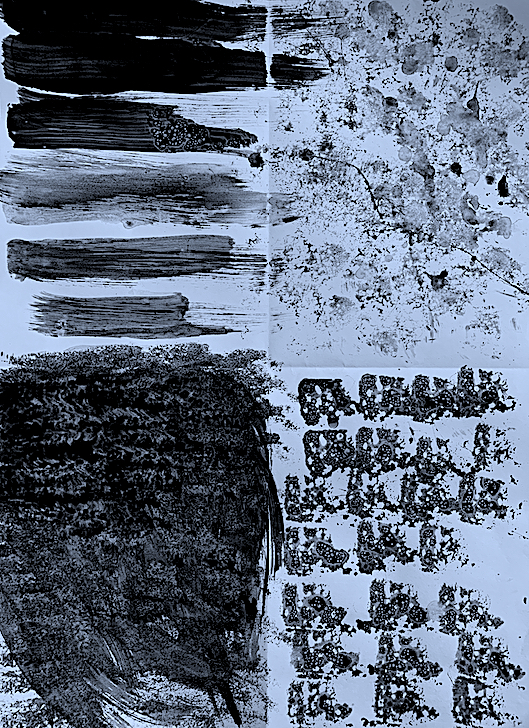
1. Close-ups
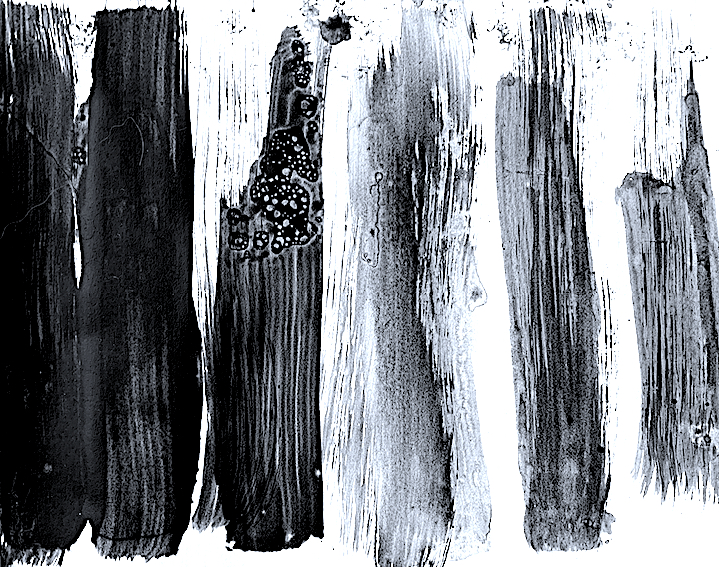
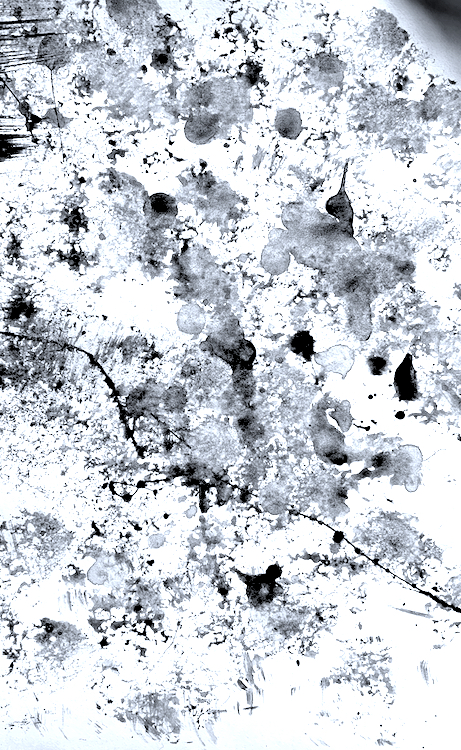
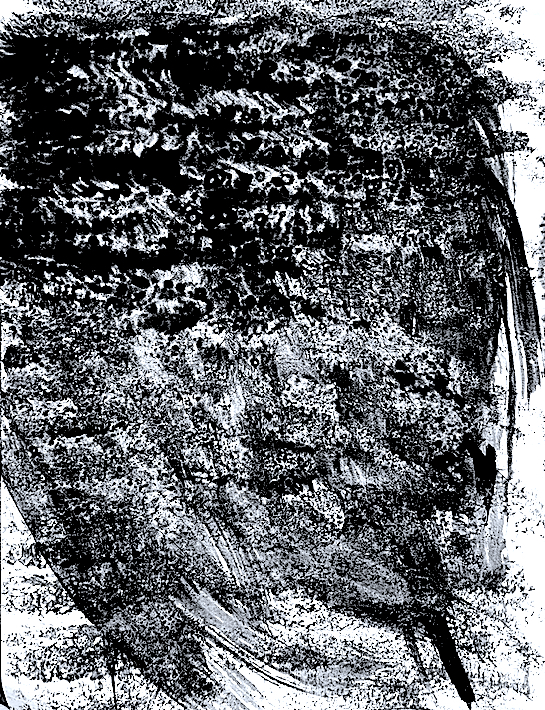
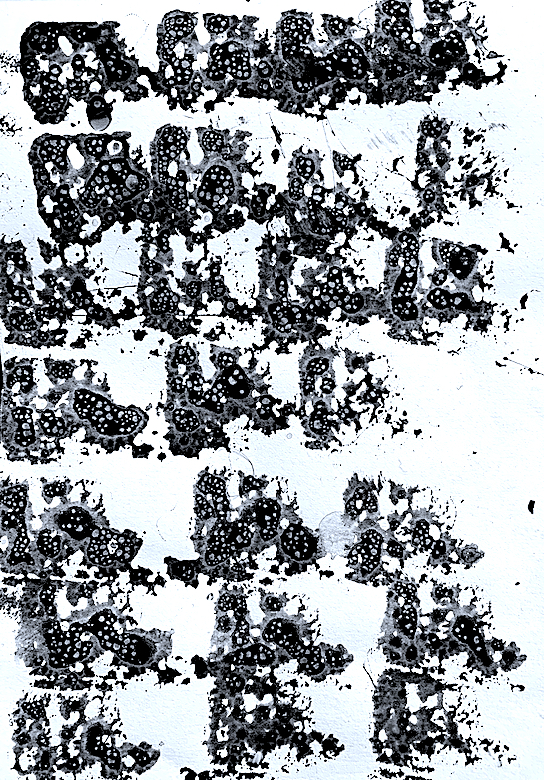
Figure 2. Verbs: Dapple and Spread, Rush and Brush, Dollop and Puddle, Run and Storm, Drip, Pull and Dilute, Bubble, Shift, Pull and Merge, Dabble, Swipe, Smear and Swirl, Underlay, Run, Bubble, Overlay, Scratch and Criss-Cross.
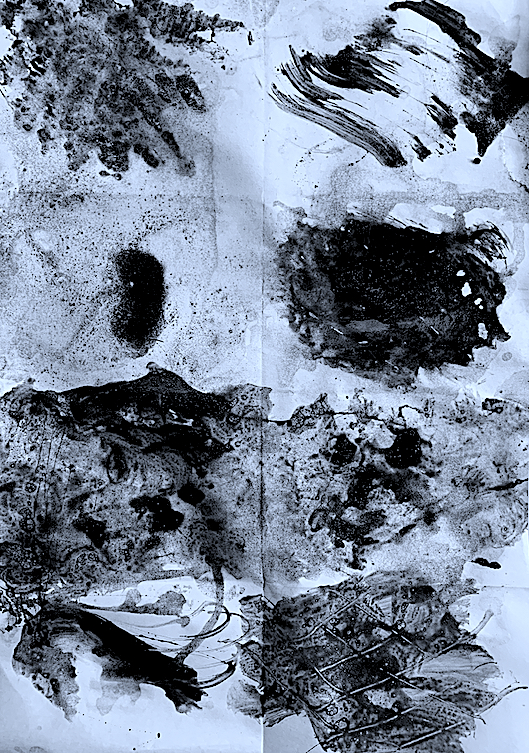
2. Close-ups
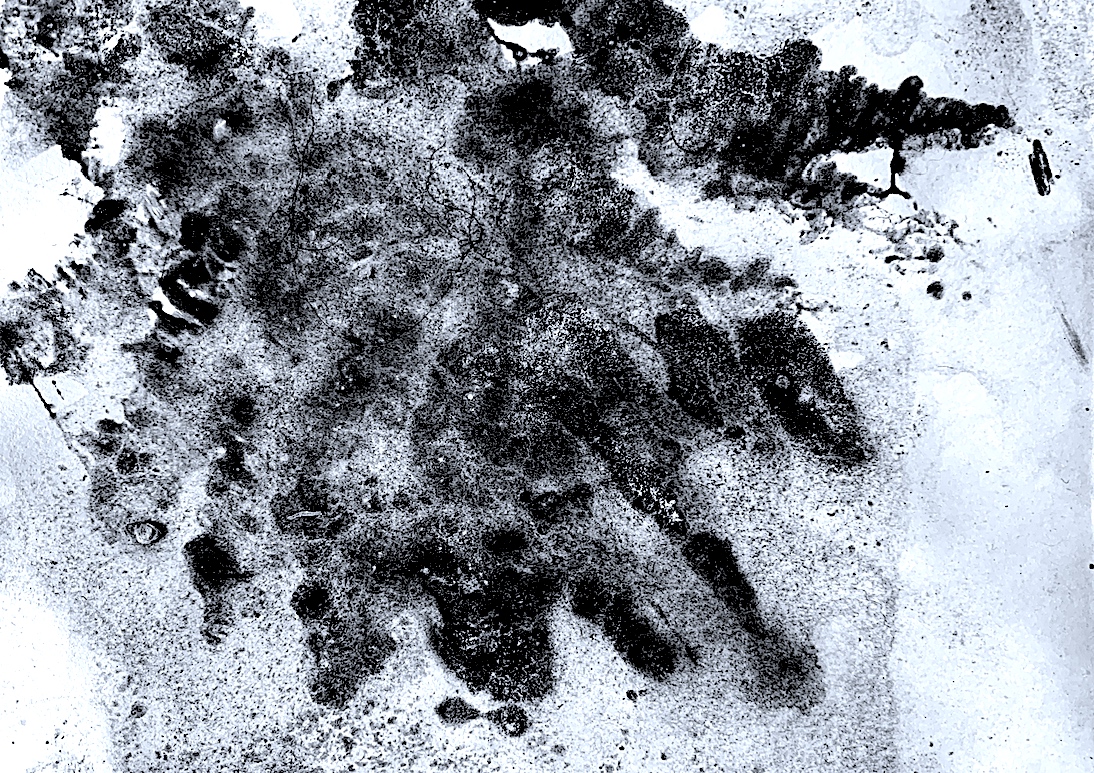
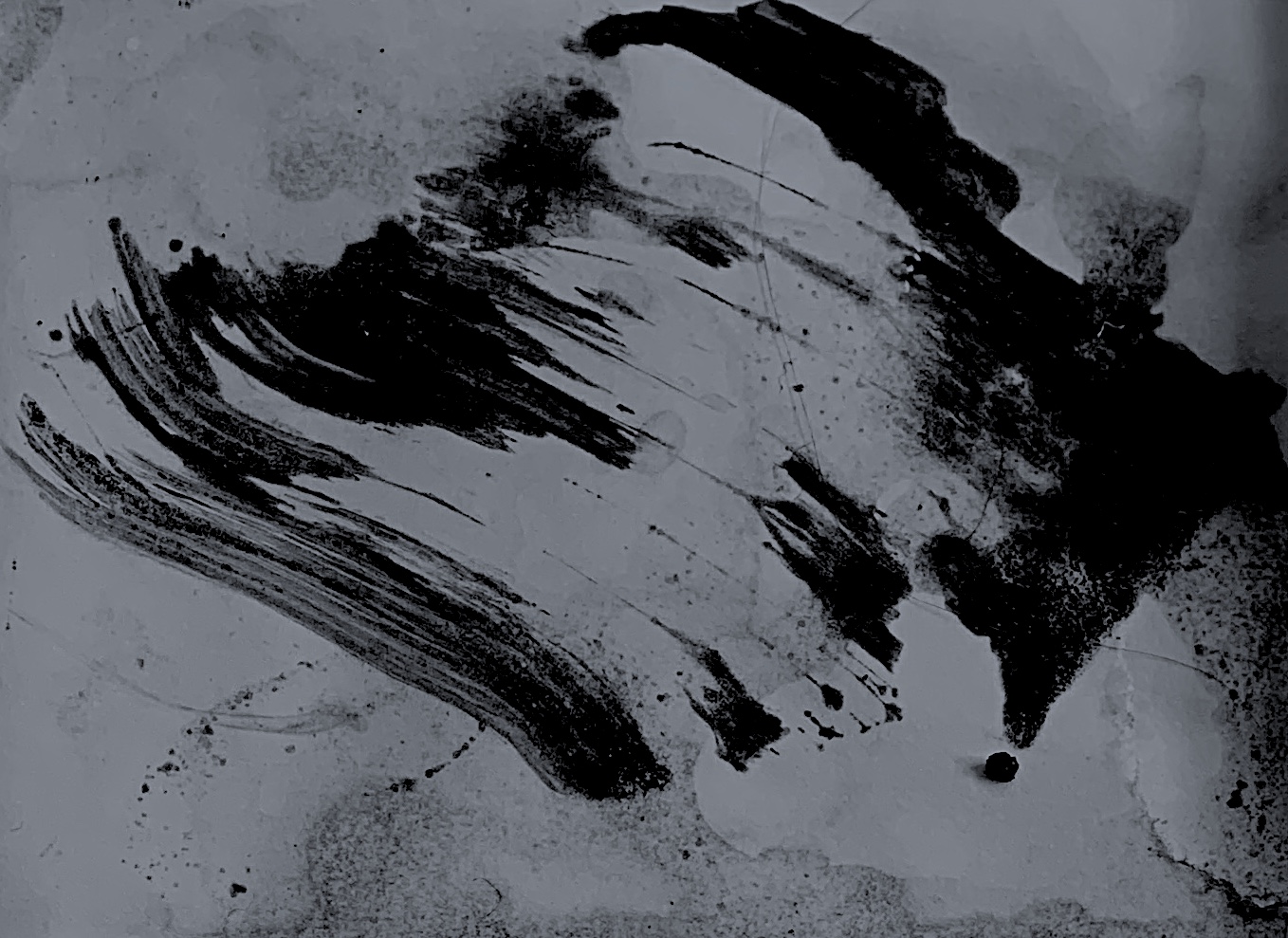
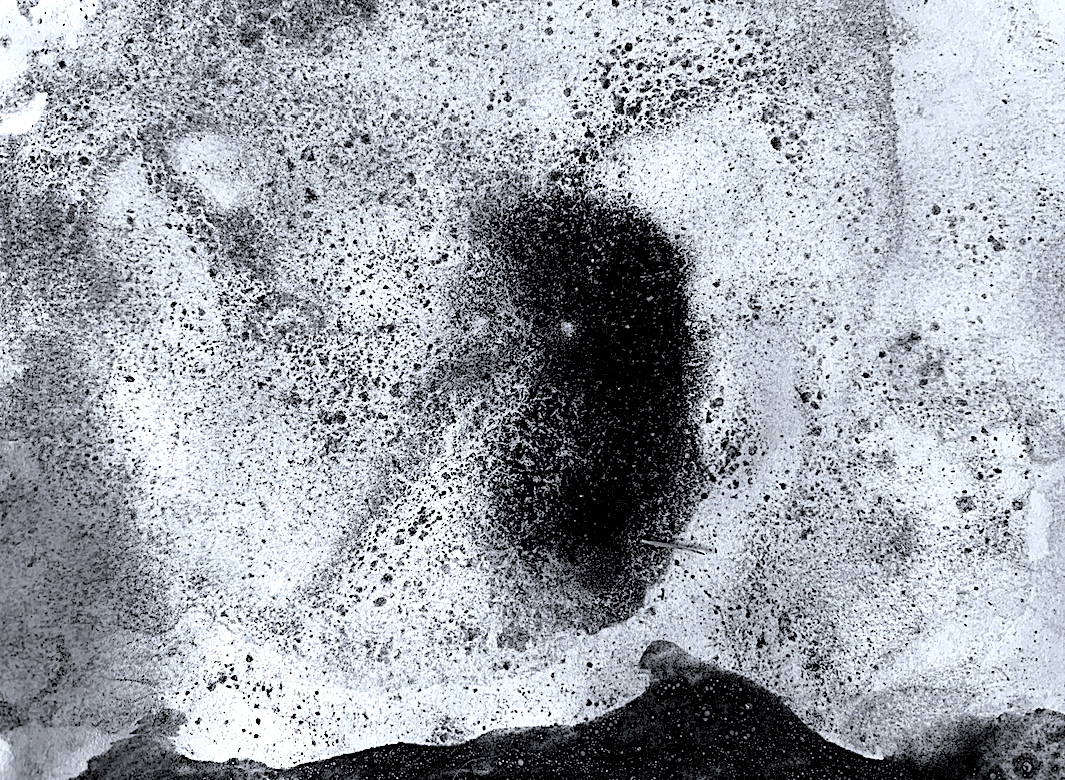
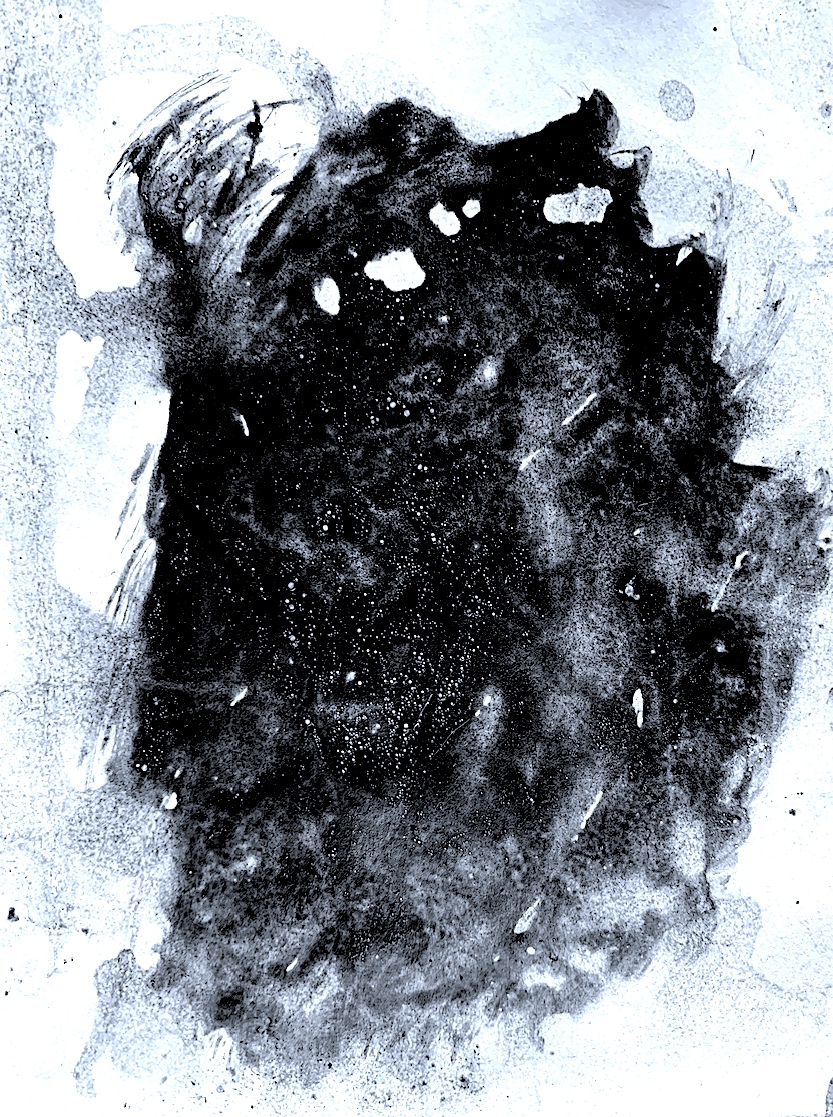
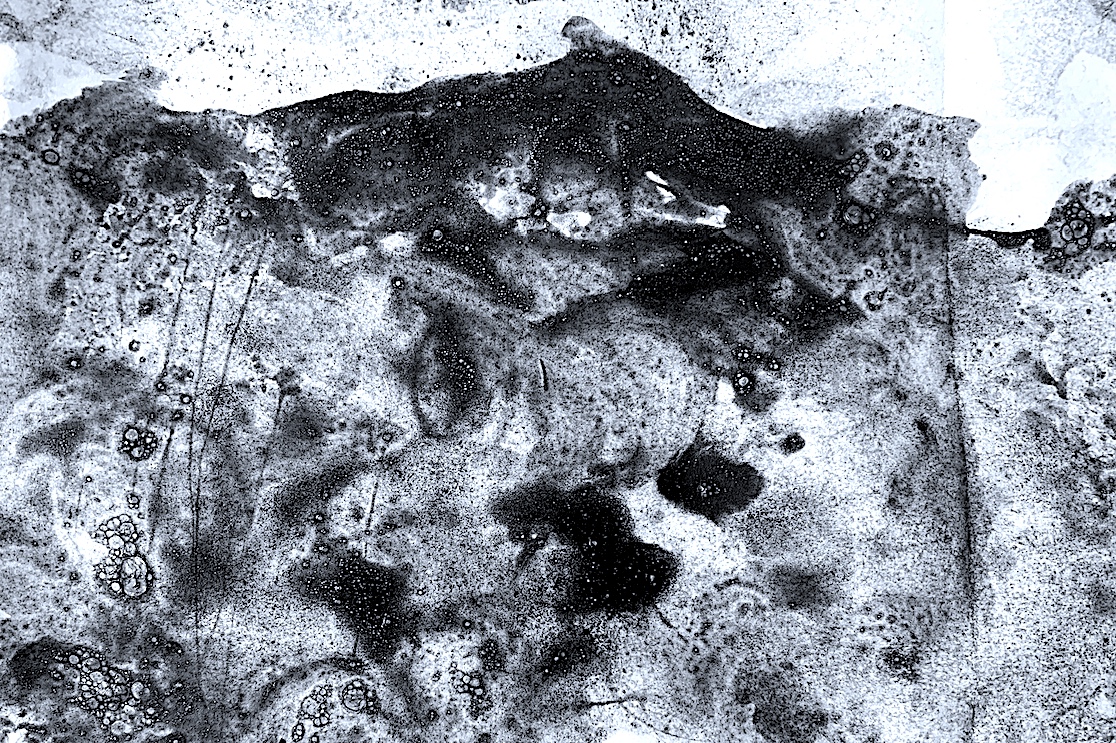
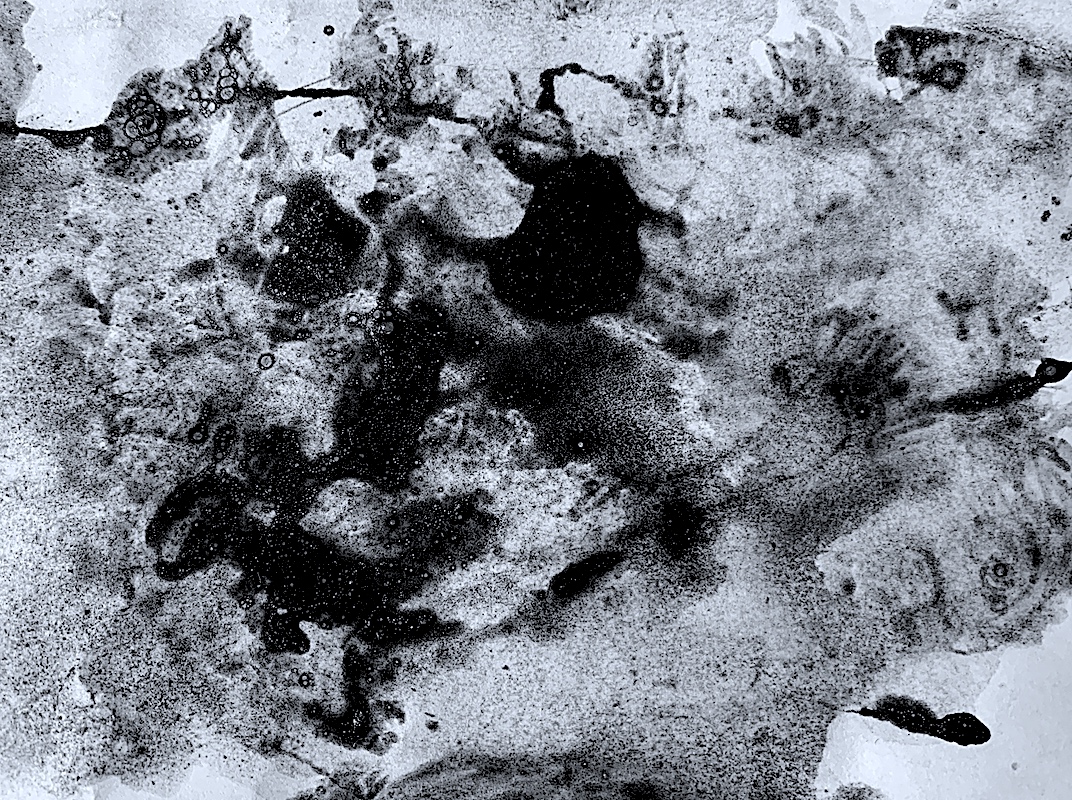
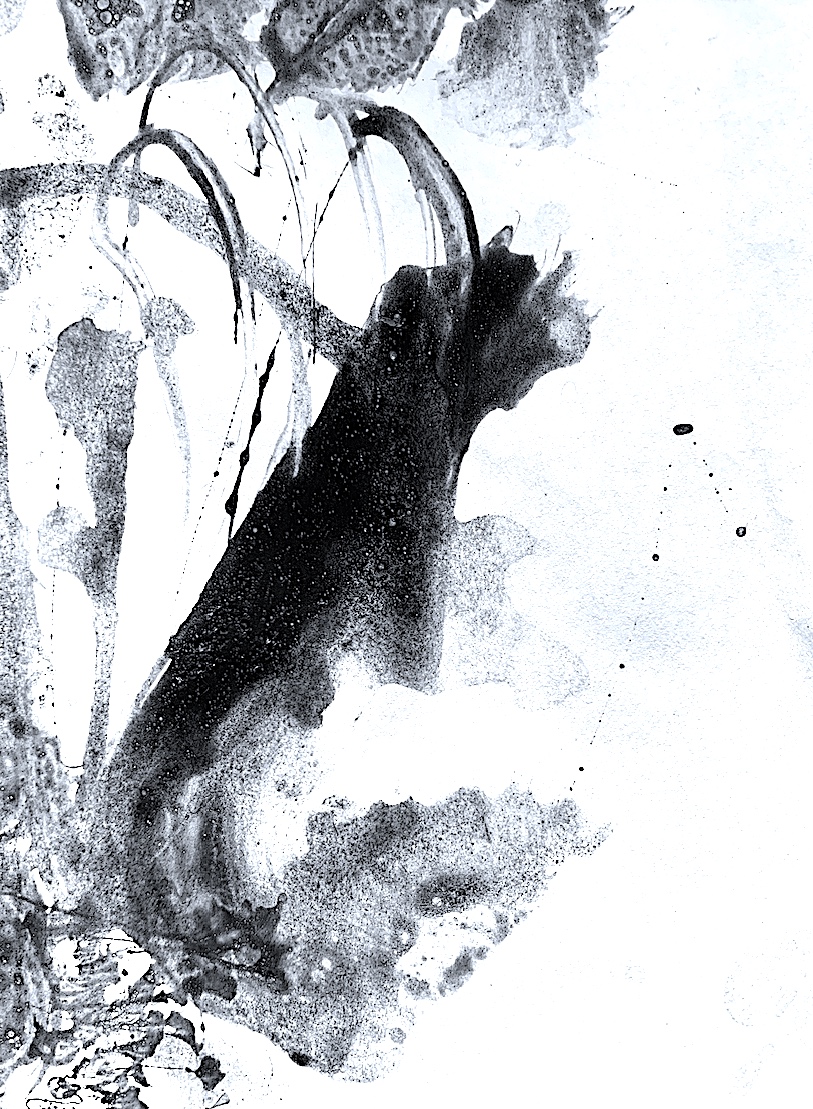
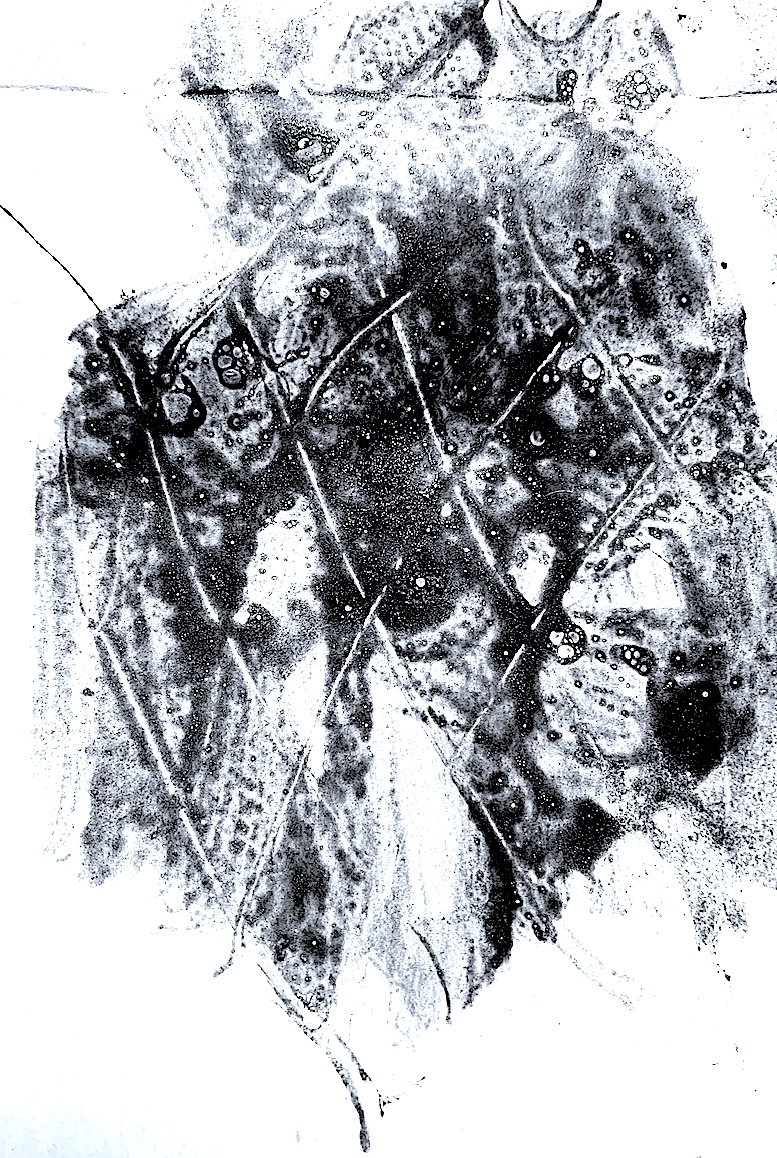
Figure 3. Verbs: Slide, Stroke, Stretch, Brush, Dab, Dollop, Drag, Slice, Swipe, Swirl, Fold, Turn, Bubble, Dribble, Dump, Heap, Jump, Dilute, Circulate, Cross, Curve.
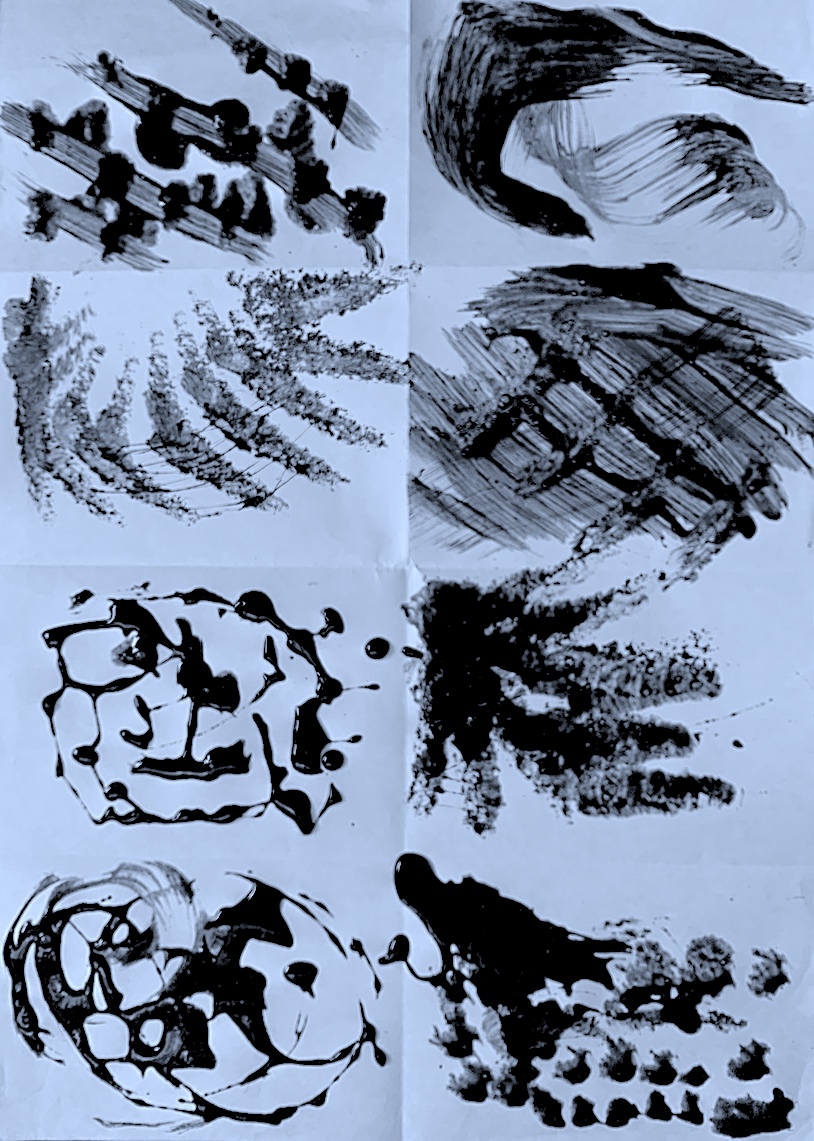
3. Closeups
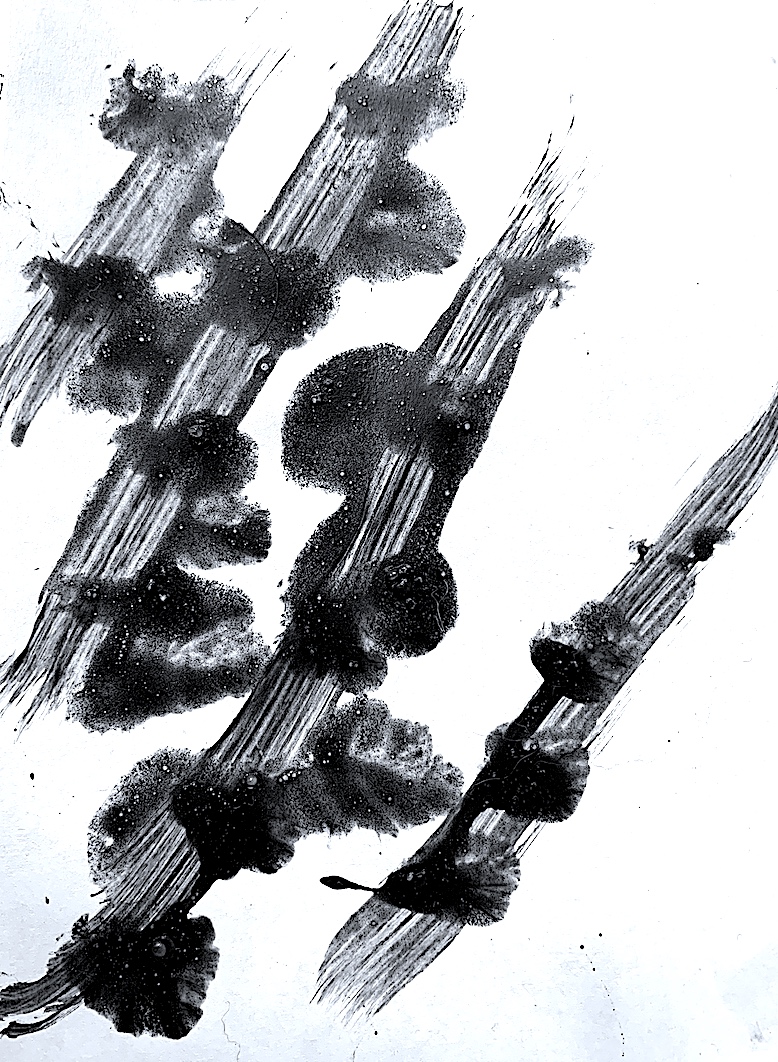







Figure 4. Verbs: Drip, Drop, Dribble, Dump, Lay, Heap, Fly, Hang, Puddle, Sit, Spread, Slide, Grow, Undulate, Curl, Swirl, Accrete, Balance, Modulate and Run.
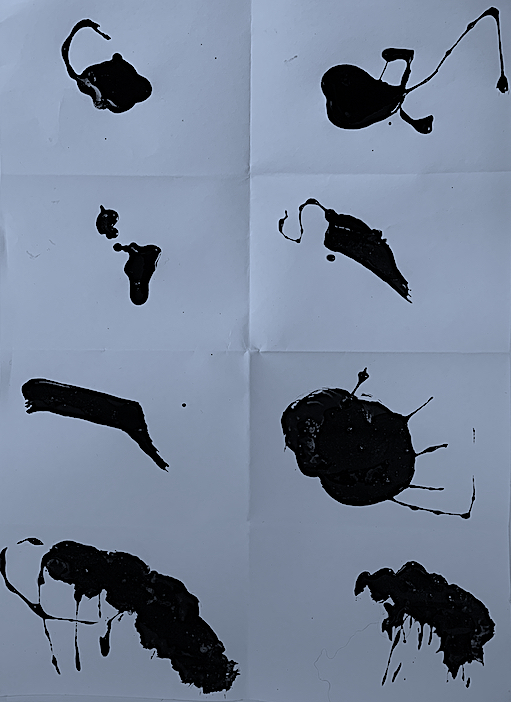
4. Closeups.
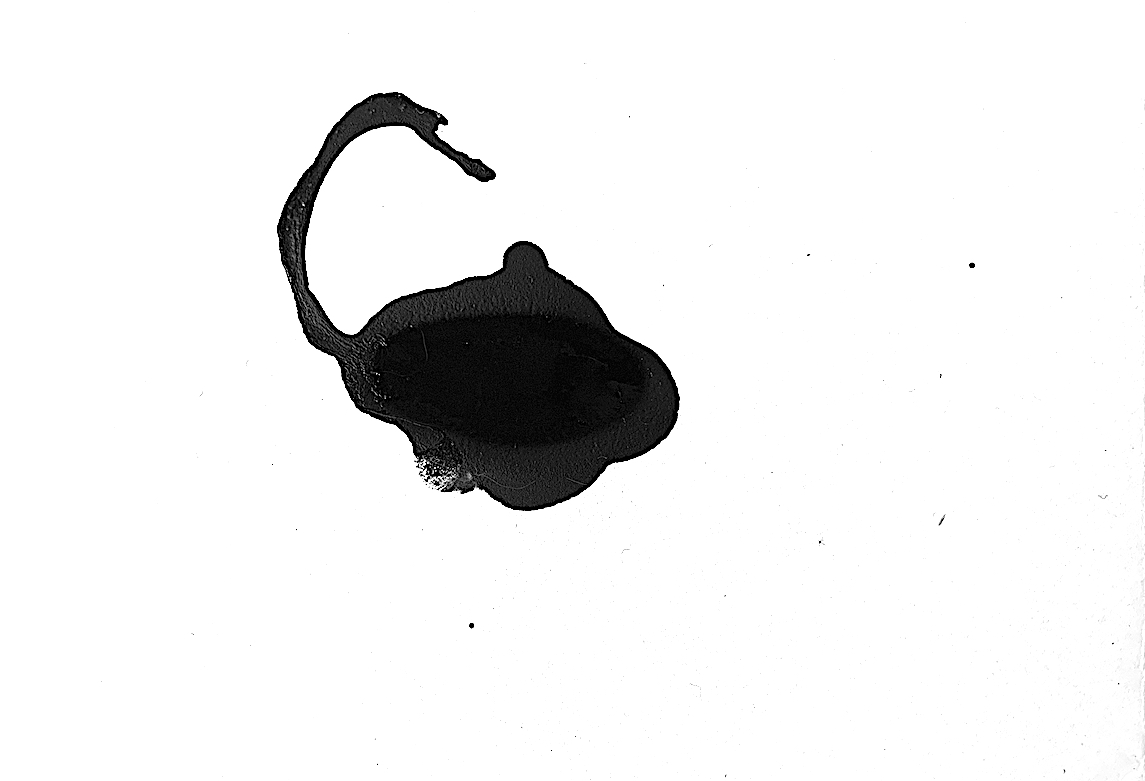
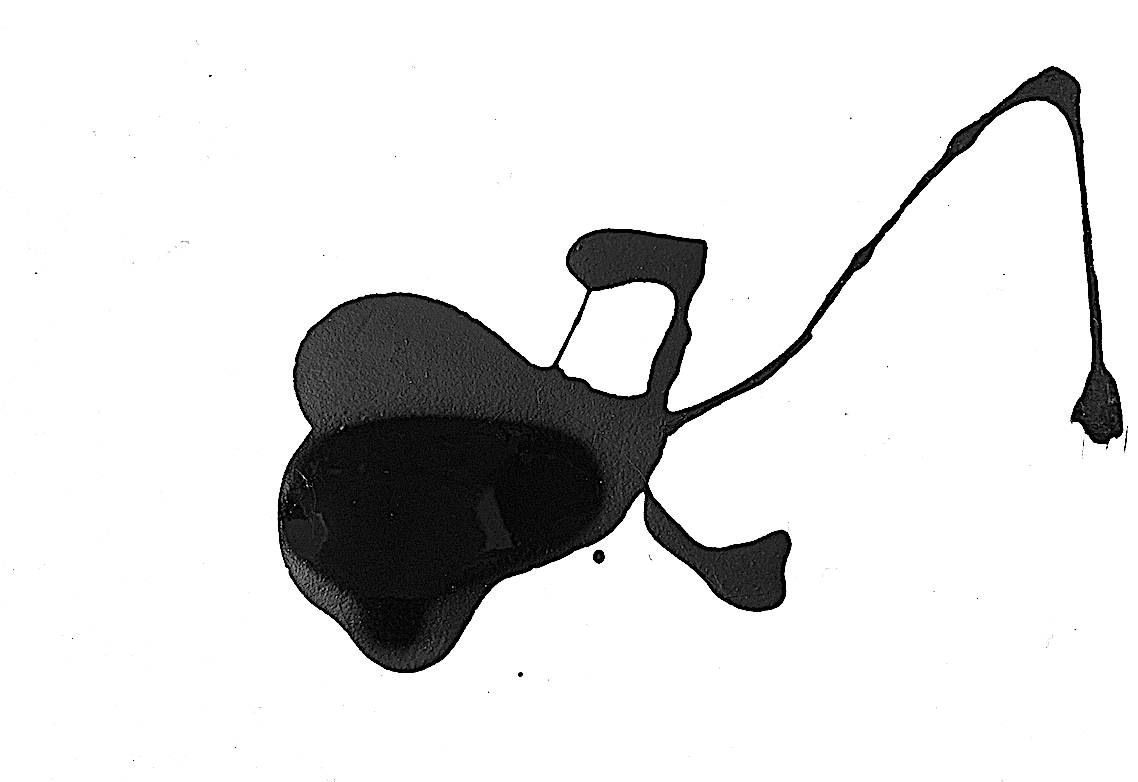
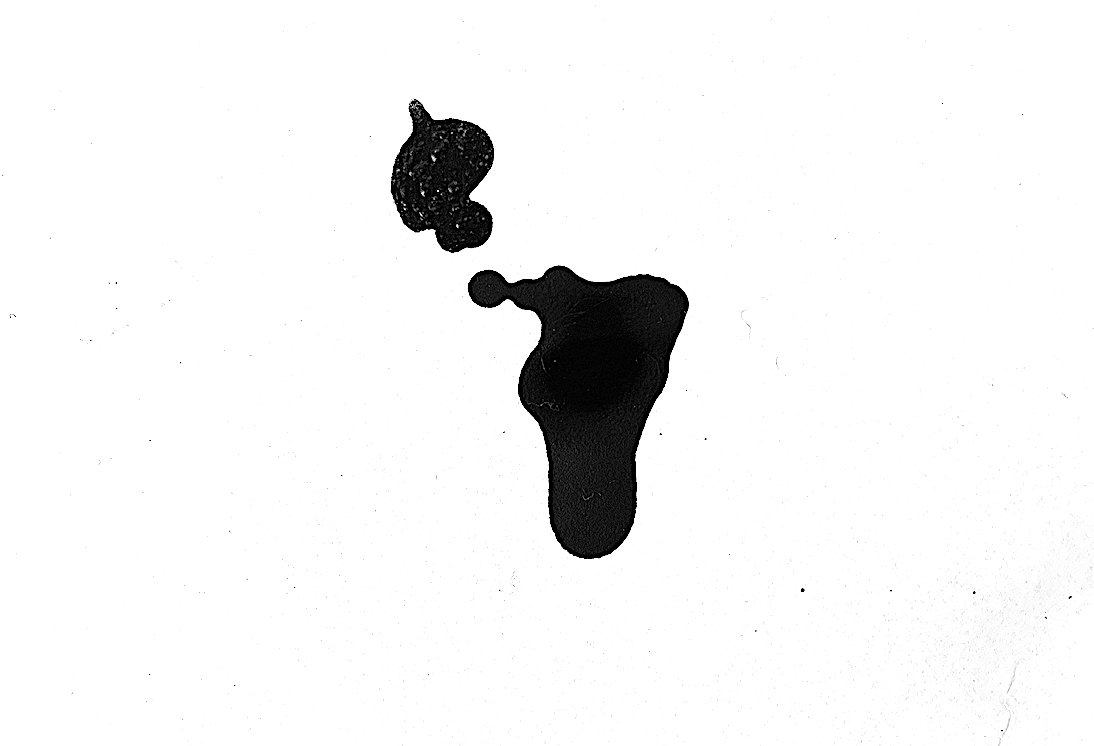
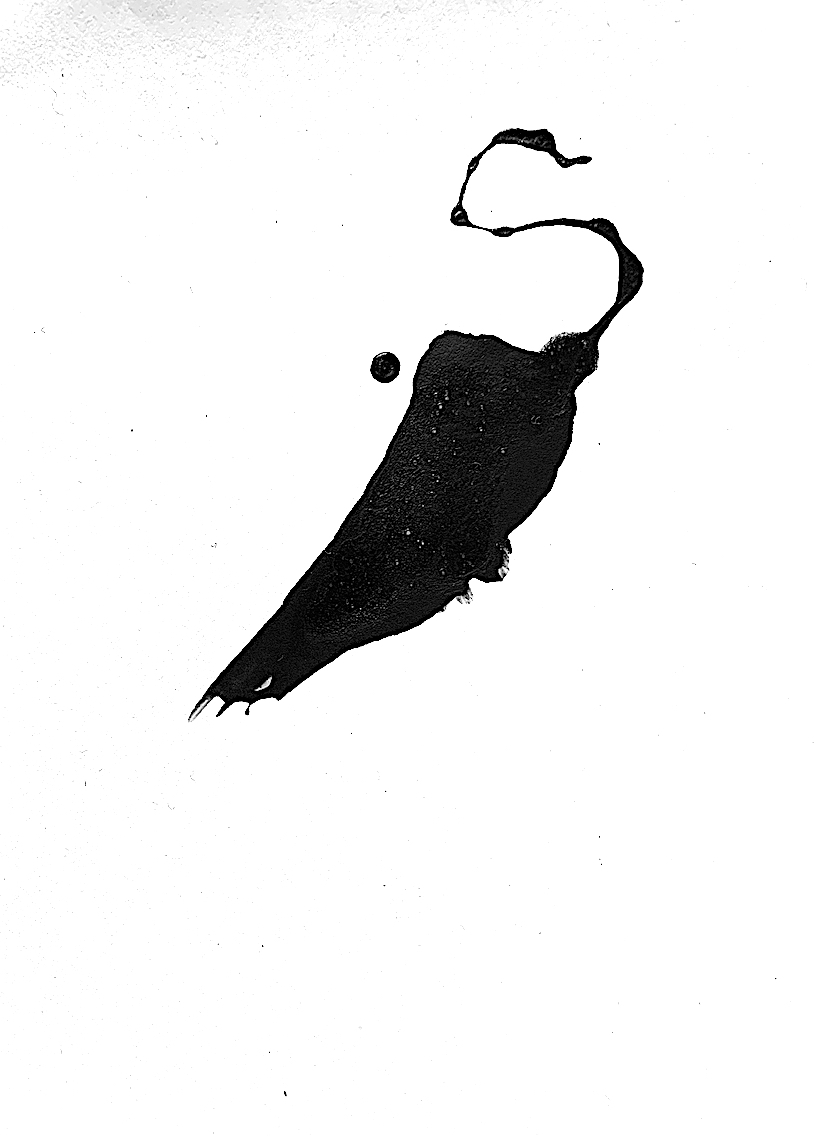
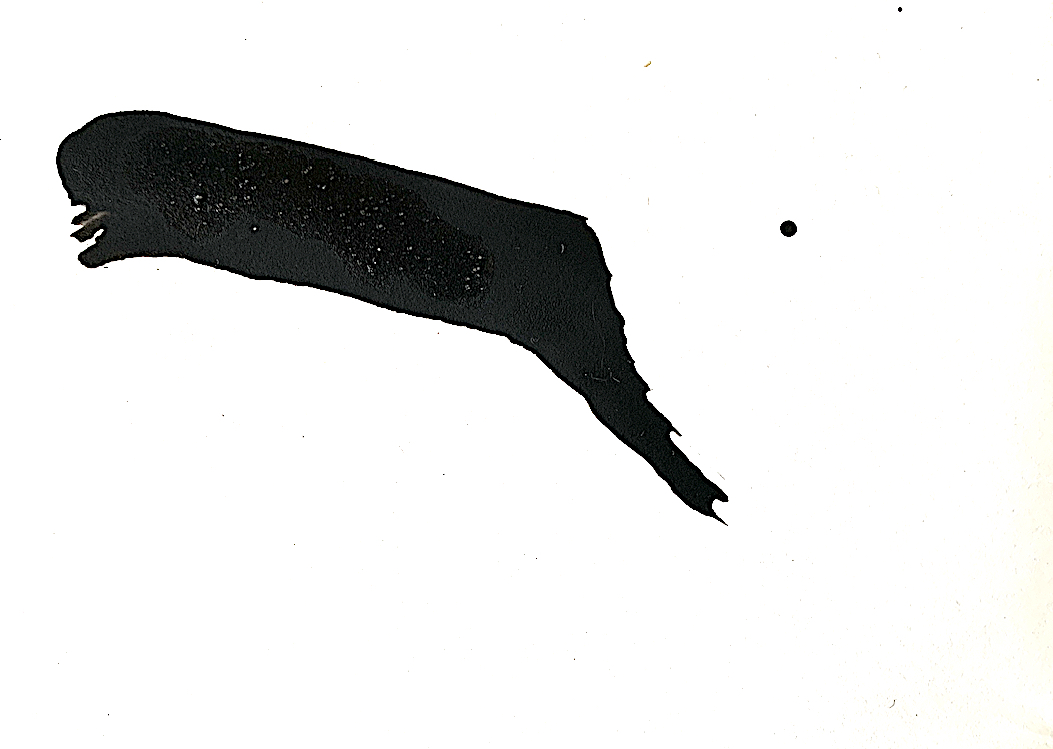
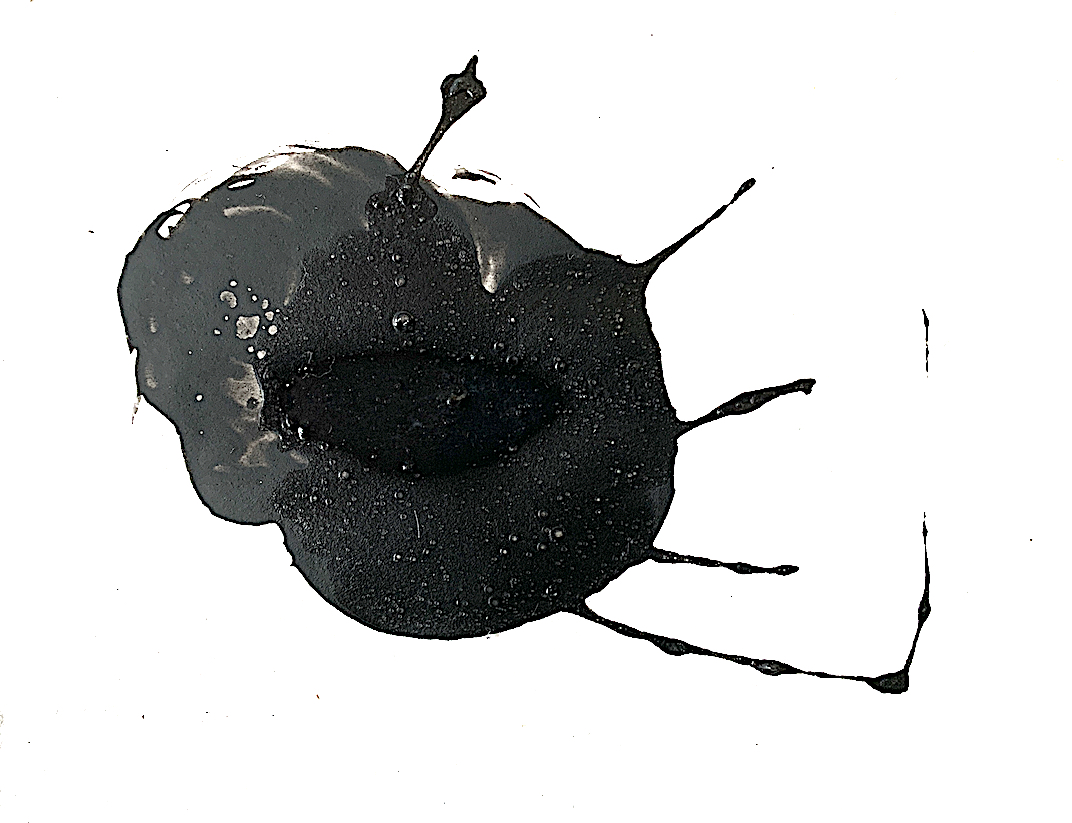
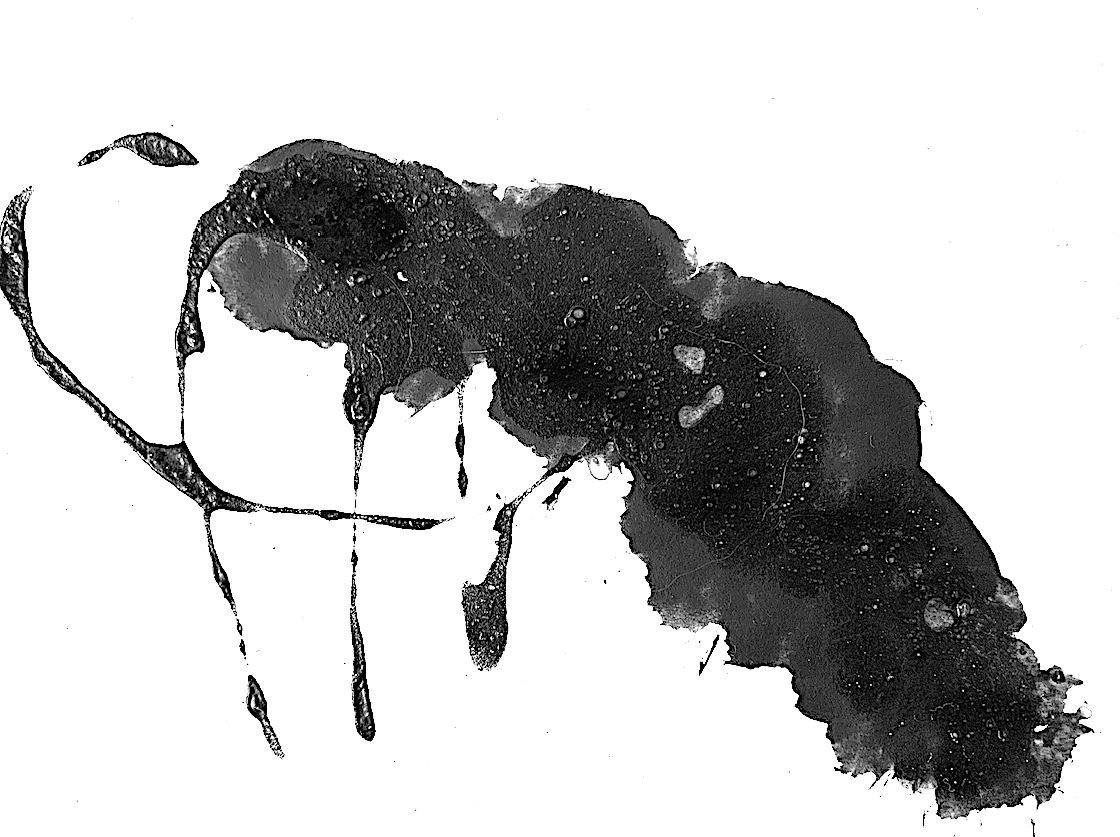
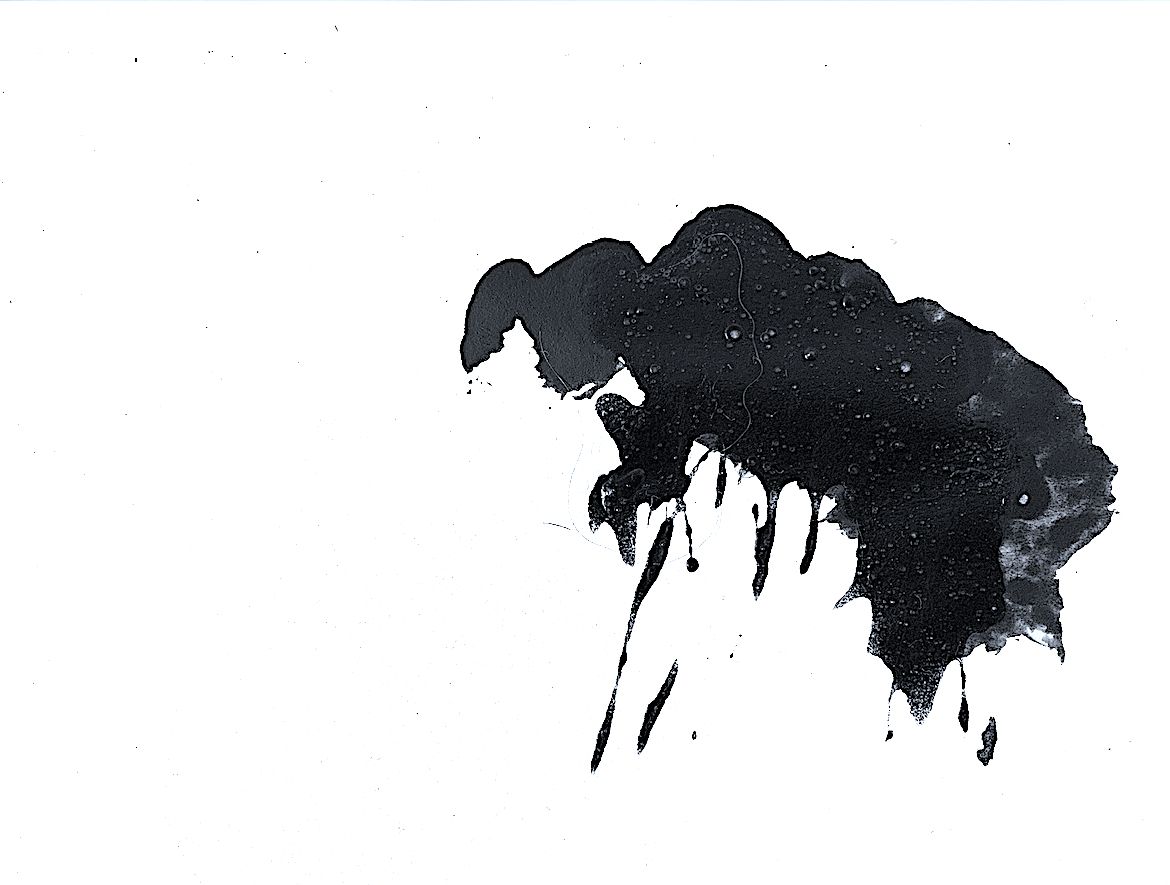
Figure 5. Verbs: Drip, Dribble, Flick, Splash, Stretch, Flow, Run.
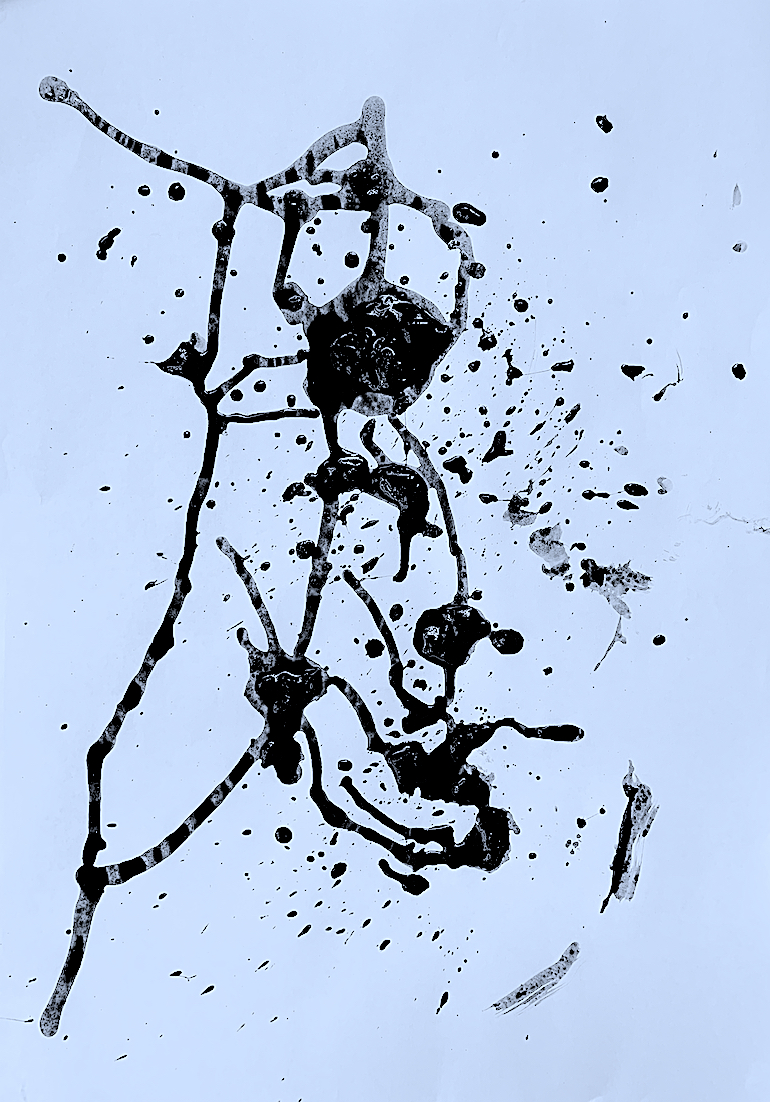
5. Closeup
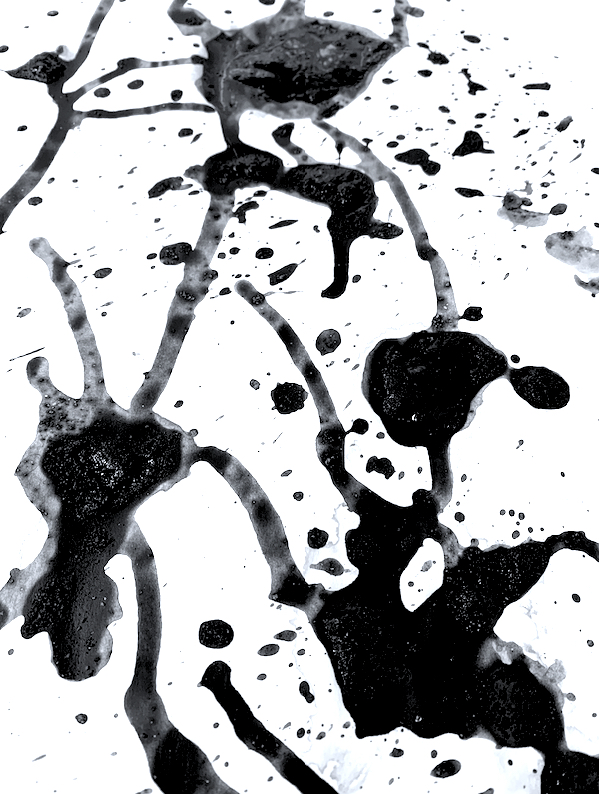
Figure 6. Verbs: Arrange, then Disarrange by Pulling, Stretching, Laying, Dragging, and Merging.
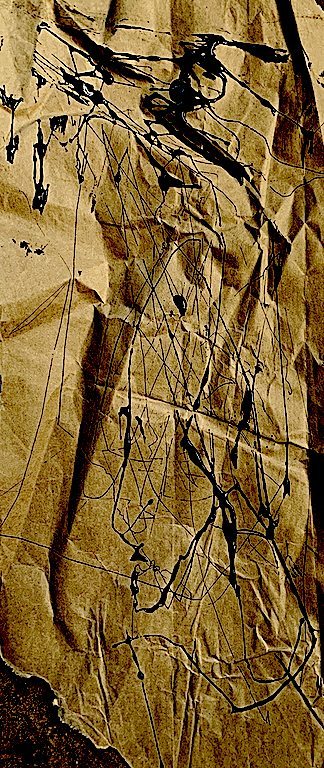
Ripped Crumpled Brown Paper 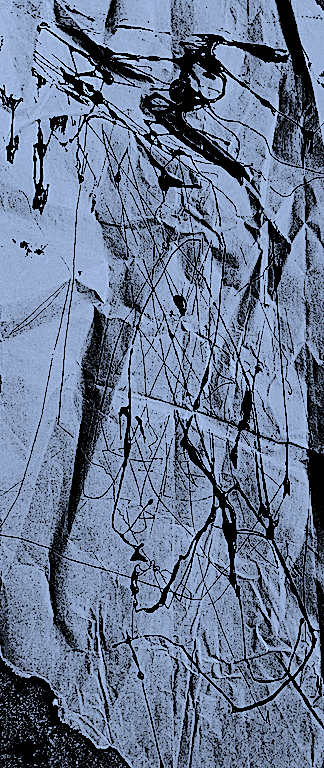
Ripped Crumpled Monotone Paper
Figure 7. Verbs: Lift, Point, Dot, Draw, Place, Lay, Drag, Pull, Turn, Waver and Stretch.
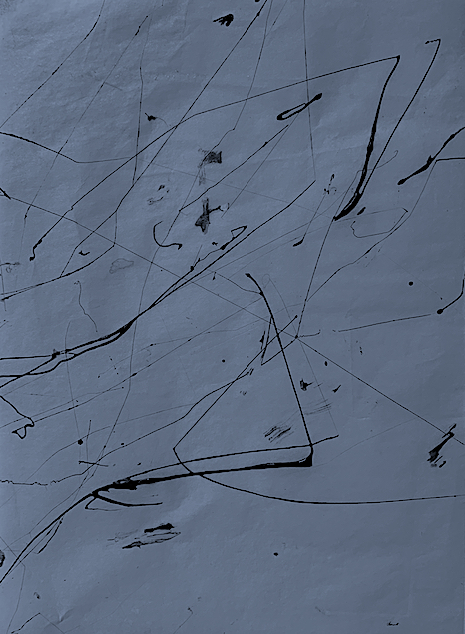
Figure 8. Verbs: Lay, Soft, Mark, Brush, Arch, Bend, Loop, Curve, Curl, Swirl, Twist, Snake, Smear, Slice, Lift, Waver, Stretch, Undulate, Turn, Match, Mask, Merge, Bulge and Overlap.
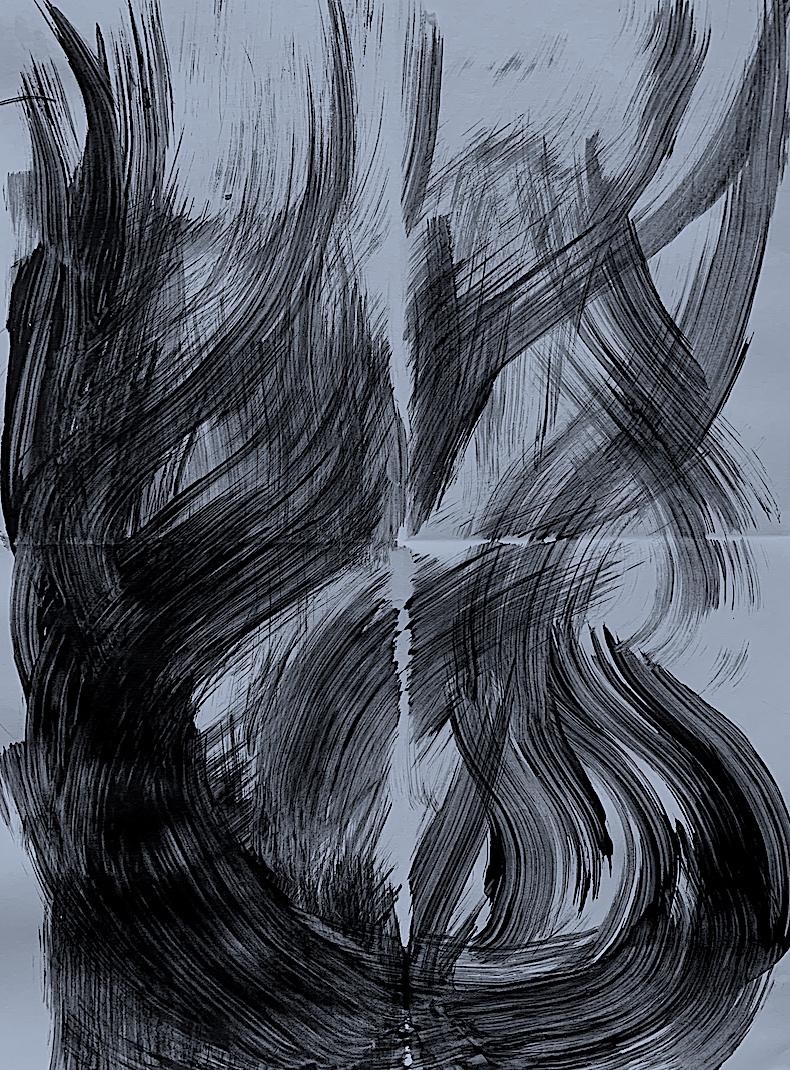
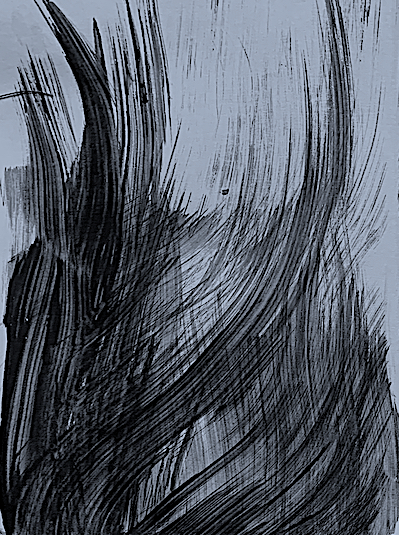
Figure 8a. Lay, Soft, Mark, Brush, Bend, Stretch. 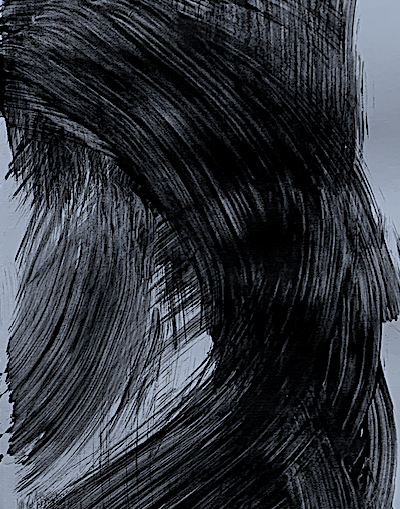
Figure 8b. Match, Mask, Merge, Bulge, Overlap.
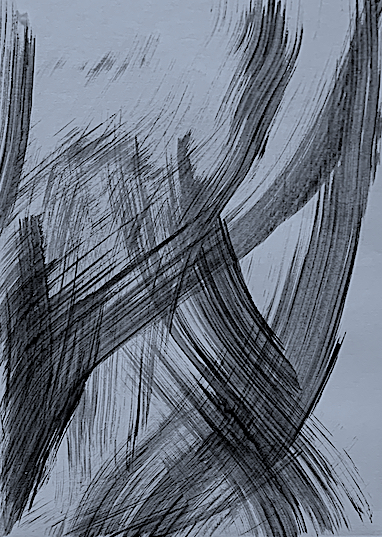
Figure 8c. Smear, Slice, Lift, Waver, Undulate, Turn. 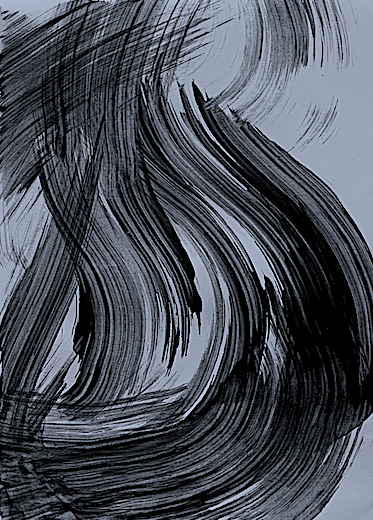
Figure 8d. Arch, Bend, Loop, Curve, Curl, Swirl, Snake and Twist.
Figure 9. Verbs: Underlay, Mark, Draw, Brush, Mix, Smear, Overlay, Spill, Flood, Soak, Dilute, Sponge, Spread, Smudge. Introduce a new Tool and Colour: White Oilstick with Black Acrylic Paint.
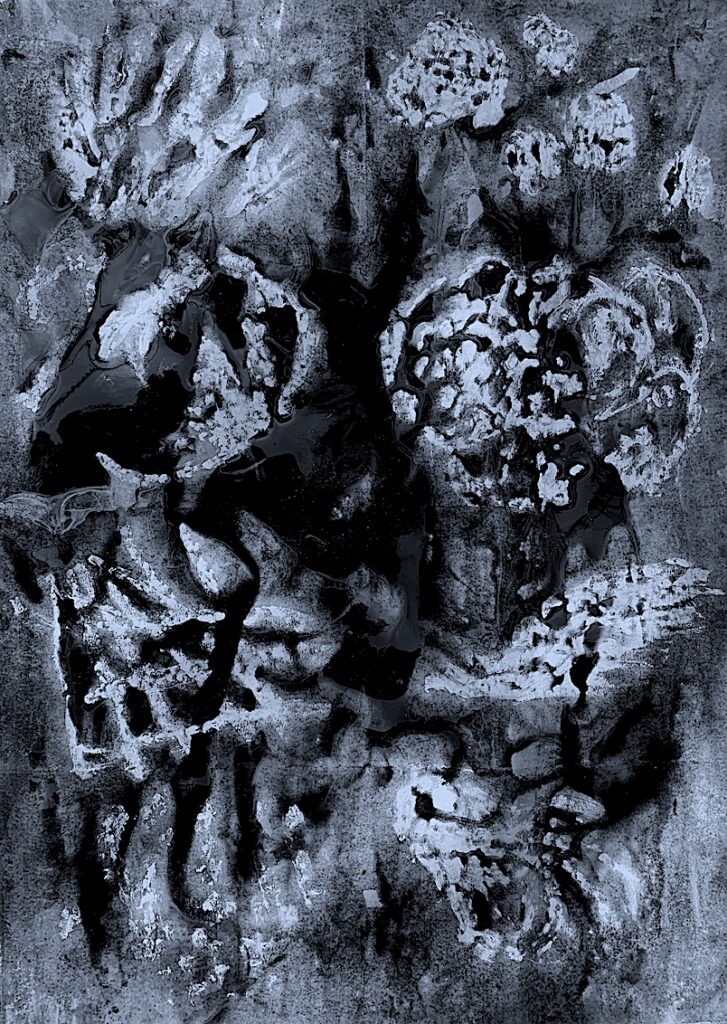
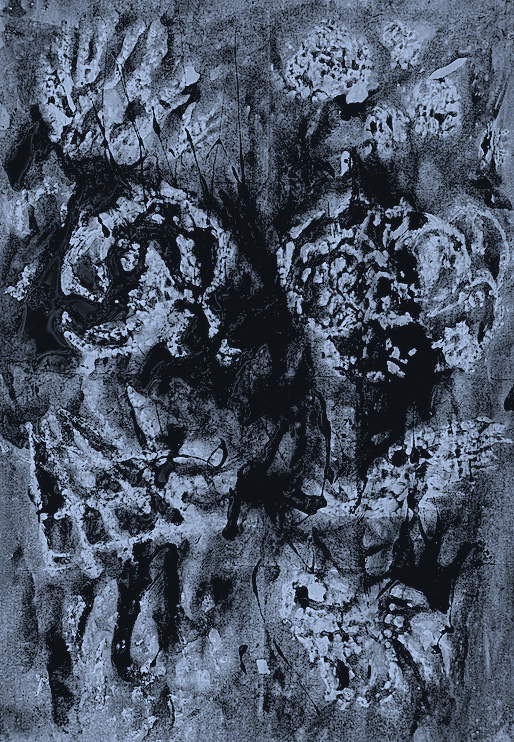
Figure 10. Verbs: Lay, Draw, Mark, Brush, Dilute, Drag, Wipe, Curve, Scrape, Scratch, Mix, Merge and Flow. Introduce a new Tool and Colour: Blue Oilstick with Black Acrylic Paint.
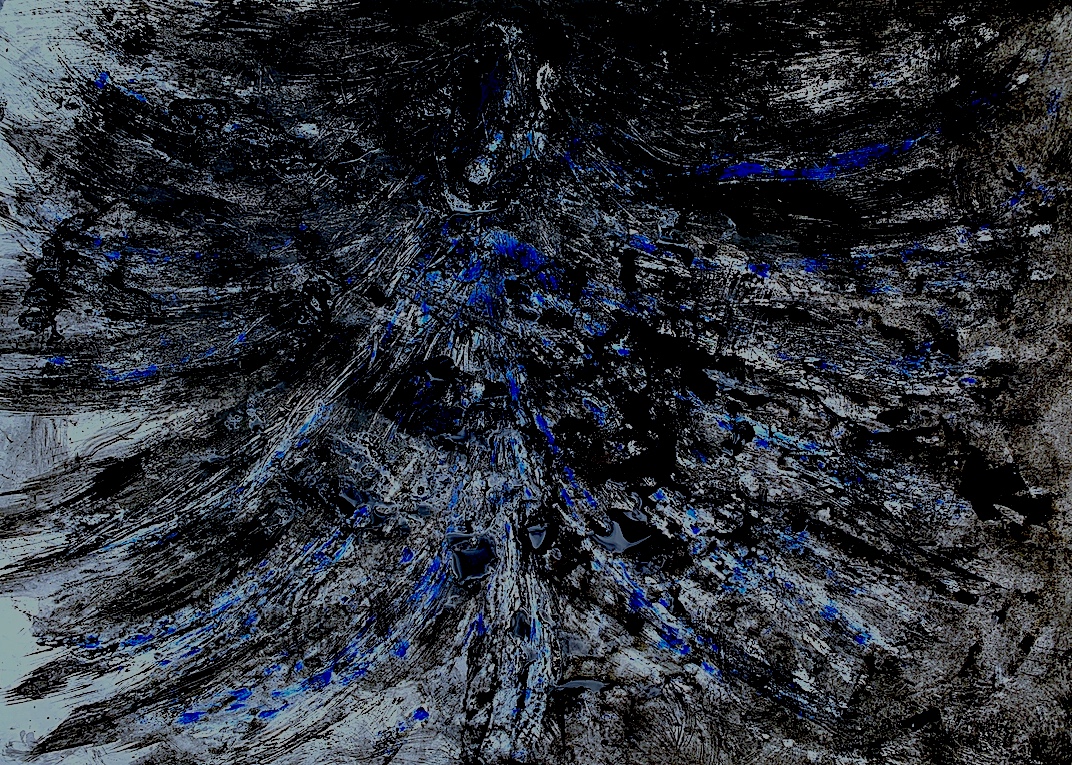
10. Closeup to see texture.
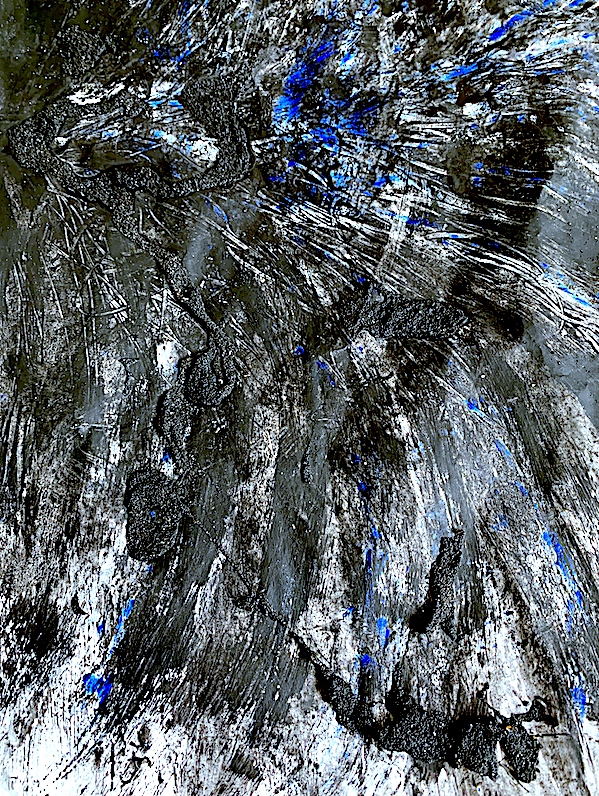
Figure 11. Verbs: Arranging by Drawing, Marking, Sliding, Stretching, Pulling, Pushing, Matching and Curving. Then Disarranging by Diluting, Wiping, Overlayering, Merging, Smoothing and Lifting. Introduce a new Tool and Colour: Blue Oilstick with Black Acrylic Paint.
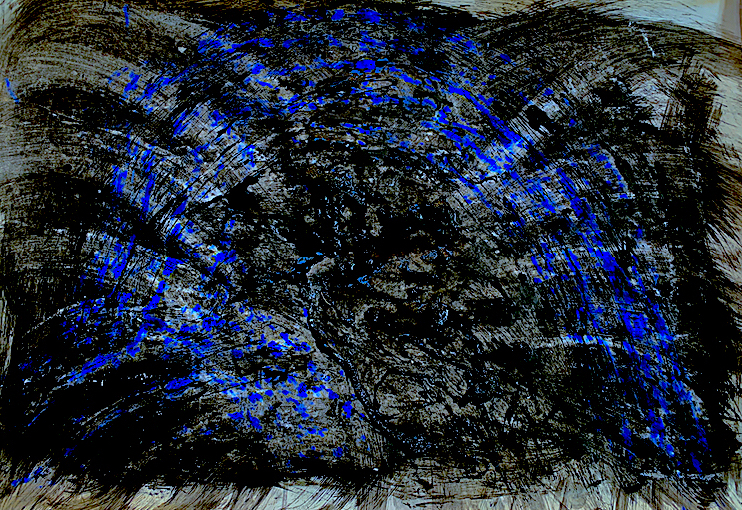
11. Closeup to see raised texture
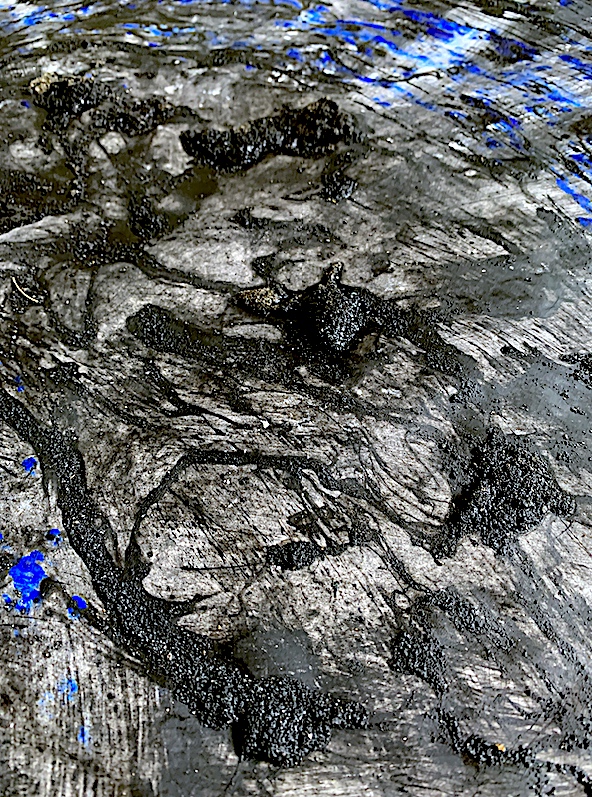
Reflection: My first exploration of generating action words in Visual art was very enjoyable. Although I was unsure whether I was allowed to add other materials to the paint, a favourite experimentation today included the mixing of paint and additives in order to gain, thus explore a thicker paint texture.
After making an array of paint verb gestures, I had a desire to thicken my paint consistency. I added a thickening agent to the black paint, a touch of PVA glue, and then spent time experimenting with the combination’s elasticity, like playing with elastic bands. I loved viewing the thin threads of paint mixed with PVA, it was like pulling stringy cheese from a pizza. Elongating the acrylic paint across the paper surface in bouncy, stretchy zig zag ways, I had to work quickly, because the thickened paint mixture was drying quickly in the sunshine.
As a next development, I grabbed some sand and made a mixture of PVA, sand and black paint. Playing around with the verb ‘heap’ I not only built up thin layers of paint separately, but invented a strange globby paint-glue-sand mixture. I enjoyed developing new forms of textural marks onto the paper surface, and gaining dirty hands too.
Lastly, I added an oil stick to introduce colour and texture, plus resistance. The paint resisted against the oil stick (white, then blue), revealing scratchy oil-stick marks, which I liked.
Through these surface encounters, aligned with my use of the ‘verbs’, I was investigating the contrast between watery paint and non-watered down paint, and how the paint’s watery quality can both resist and merge when mixed with thickening agents. I noticed the materiality of the paint changed using the added ingredients, especially the glue, which gave a different surface tension to my experimentations. Although my bubbly, marble-like effects with watery paint still appeal, by increasing the strength of the acrylic paint, and adding other products (glue, sand and oil-stick), my final textural developments seem more compelling to me.
